A Wide Blank | Tyler Coburn
Keywords: a wide blank, art world, Biennial, interpassivity, Jon Konkol, slide, theory, tyler coburn, zizek
What can the art world learn from Žižek's theory of interpassivity?
A Wide Blank
Tyler Coburn

Five years ago, I came across this image of Slavoj Žižek, lying semi-splayed on Freud’s couch. Behind him hangs L’Origine du monde, the infamous Courbet painting that Lacan once owned. A discussion of the family relations (read: what-the-fuckness) in this photo would fill a whole other essay, so I’ll spare you my analysis. But please, someone: write that essay.
The purpose of this essay is to talk about Žižek’s theory of interpassivity, which I also discovered at that time. Over the following pages (with maximal digression) I’ll attempt to plot it out.1

Interpassivity is easiest to understand in distinction from interactivity. Writing on the topic in the late 2000s, Žižek particularly focuses on how interactivity affiliates with network culture: for example, in the premise that through online media, we no longer passively consume, but are delivered again as prosumers.
This participatory turn figures into the liberal-democratic horizon of the Internet—and this horizon, as we know, is often defined in practice by corporate fiefdoms. We can be our most interactive, participatory, democratic selves; we just need to join Facebook first.2
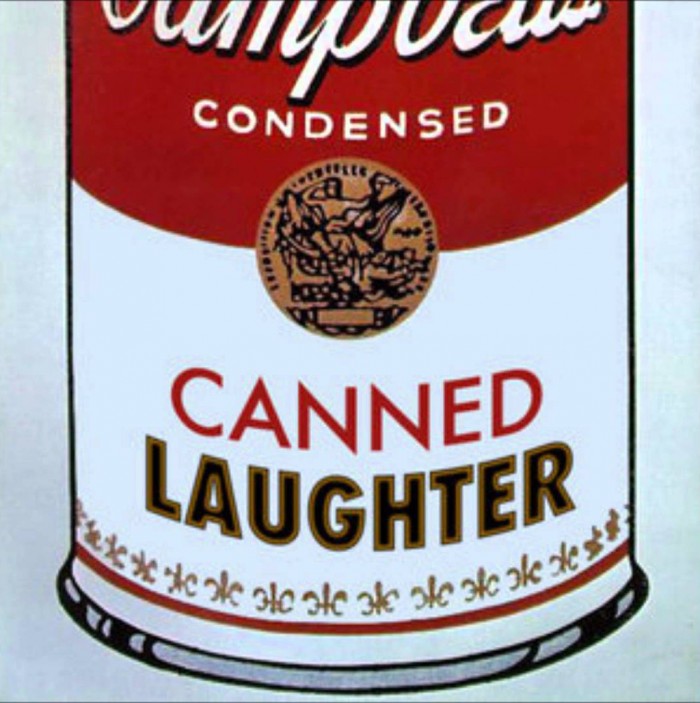
As the uncanny double of interactivity, interpassivity denotes situations in which we give away our passivity—in which our passive experience can be transferred to, and performed through, the Other. This is a crucial point, so let me clarify: we do not passively consume a sitcom, but rather witness the laugh track performing the passive consumption on our behalf. Whether we also laugh is irrelevant to the scenario; by giving away our passivity, we’ve freed ourselves to enjoy as we like.
Moreover, Žižek contends that what we feel at the end of viewing is a similar satisfaction to what we would have felt if we laughed the whole way through—that, in a strange way, we may give away our passive consumption of an object, though we can reap the same affective rewards.
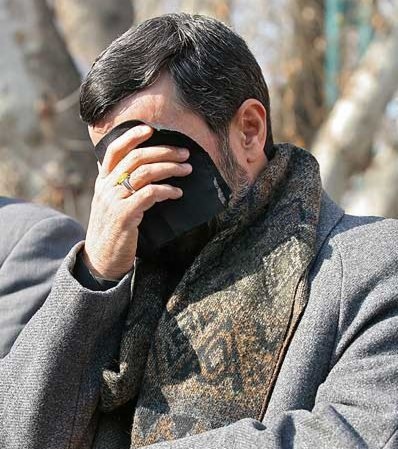
Here are some other examples the theorist provides:
—The Greek Chorus that performs our “innermost feelings and attitudes.”3
—The professional mourners hired to do the weeping at a funeral. The above image accompanied a 2010 news report about the surge of “Help Wanted” ads for weepers in Iran.
—The Tibetan prayer wheel, its cylinder containing a paper roll of Buddhist texts. A believer need only set the wheel in motion, and it will supposedly do the praying for him.
—The fundamentalist Other, through whom the rest of us can act out our fantasies. To maintain our sense of rational superiority, in this dynamic, we are dependent on the Other’s belief while disavowing any personal stake. The Other can thus continue to believe on its behalf and interpassively believe on ours.
—Christ himself, “who redeemed us not by acting for us, but by assuming the burden of the ultimate passive experience.”4
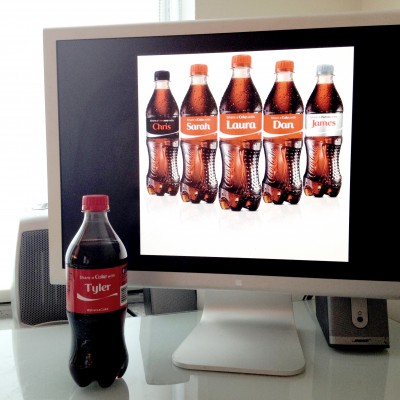
—The Coke bottle that shrieks, “Ooh! What taste,” pleasuring itself autophagically. I couldn’t track down an image of the ad, so here’s a selfie of some strangers and me.
I’m aware that these are wildly different cases, suggesting the range of interpassive experience. Certainly, much advertising goes the way of the Coke bottle, for what do we usually see if not people and commodities anticipating our enjoyment, enjoying better than we ever could, taking the enjoyment out of enjoyment, freeing us from the injunction to enjoy?
Beyond advertising, the scope of examples may suggest, Žižek writes, that “the fundamental attitude which defines the subject is neither that of passivity nor that of autonomous activity, but precisely that of interpassivity.”5
Before unpacking that provocative claim, we should refine our working definition. Žižek separates interpassive experience into two dominant modes:

1. Real belief: the laugh track, the mourners, the prayer wheel. The mistake we make here is assuming our enjoyment to be passive, not interpassive. To Žižek, this stems from humanist thinking: the belief that we begin as self-present subjectivities who then choose passive or active ways of experiencing the world.
On the contrary, if we view interpassivity as a “fundamental attitude” that displaces one’s experience, then we are no longer centered subjects choosing to be decentered, but subjects negotiating a preexisting field constituted without a center.

2. Symbolic belief: the savior, the fundamentalists. As previously discussed, this interpassive move relies on disavowing the identity of one’s belief, while interpassively believing through the Other. The object believes for you, the object suffers for you.
So if real belief operates under the guise of subjective consent, symbolic belief does so through subjective disavowal.

Returning to Žižek’s claim of interpassivity as “the fundamental attitude that defines the subject,” we are better equipped to see how
can be cast off, delegated, performed through the Other.6
What becomes of this subjective kernel we trade on the interpassive exchange? It begins as the unconscious. It remains the Other.
And what do we gain in the trade? A thin shell and a wide blank, running room and the drive to act. We begin again as a void, as an emptiness that is not nothing.

In his 2010 essay, “The Subject Supposed to Recycle,” Campbell Jones offers a practical example of how we can put interpassivity to work.7 Recycling, in his opinion, has become a seemingly moral duty, yet who are the agents of this moral responsibility? How have the workings of ideology supposed us recycling subjects?
Obviously, Jones isn’t arguing against the ecological benefits of recycling, but worrying that its moralization aids rather than alleviates capitalist overconsumption, providing a small offset for consumer guilt when systemic work is needed. The simple fact that recycling has been naturalized as a moral good, in other words, excuses consideration of whether it is merely the good most in service of the economic status quo, instead of being the good best suited to the stark environmental challenges ahead.
We thus need to denaturalize recycling, to depersonalize duty, to remove “the vast body of consumers from the center stage of guilt.”8 In Jones’s argument, interpassivity becomes the motor: a refusal of the duties we should never have been made to follow. Refusing to perform, he suggests, is a means of demanding renewed accountability from the Other.
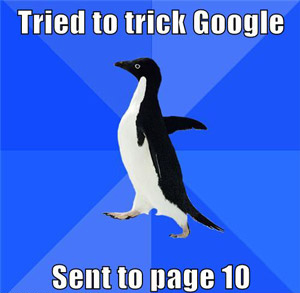
Let’s look at another case. As I previously mentioned, Žižek assumes interactivity to increase in the online age. This needs revising with the explosion of algorithmic tracking. Social media may provide ground for interpersonal interaction, though the intended value—the remunerative value—requires our passive consent. We accept terms that allow us to communicate some version of ourselves, yet far from blossoming into virtual subjects, we become objects tracked by objects: lucrative objects, to be precise, surrounded by commercial objects.
So, there’s been much talk about how to game the algorithm, and I’ll briefly discuss one theory.

In his 2014 essay, “Me Meme,” Rob Horning makes the call for a “postauthentic” self.9 By giving away those parts of ourselves transferable to value-rich data—by shamelessly performing to algorithmic capture—we may come to identify that nontransferable remainder of selfhood, also known as the “soul.” Put this word in scare quotes, and it doesn’t seem so quaint.
Horning is not working with Žižek’s lexicon; nonetheless, he gives a shrewd account of how interactivity and interpassivity coexist in Web 2.0 experience. We are, in a sense, both the joke and the laugh track, product and consumer, the hand that feeds and the ass that shits. Like Žižek, Horning thinks we’ll regain our interiority by negative means. He’s hoping that a soul may be hiding in the hollows. Žižek, as we’ve learned, believes this kernel was the first thing we traded away, but that the space can be put to other use.

Inevitably, art elbows in. At first blush, much commercial art goes the way of the Coke ad, for what do we usually see if not commodities anticipating our enjoyment, enjoying better than we ever could, taking the enjoyment out of enjoyment, freeing us from the injunction to enjoy? The Coke bottle shrieks, “Ooh! What Taste!” The artwork says the same—in a dryer tone.
So what, then, would be a critical, aesthetic form of interpassivity? Is the interpassive artist a “postauthenticist,” “circulationist,” all purposes slut? An overproducer who mines the inessential crap, digging deep for his own private soul?

Claire Fontaine’s theory of the “ready-made artist” provides one template. Under the present conditions of cultural production, she claims, we are all ready-made artists, expropriated from life, from the use of life—and thus, from the experience of freedom. We are as absurd and displaced and vulgar as the urinal.
And like the urinal, our aesthetic value relies on our uselessness, on our having “no influence over the cultural apparatus and even less over its political function.” Instead, we are left to carry out the established roles of the artist; even the relational aestheticians are burdened by the pretense of “originality.”10
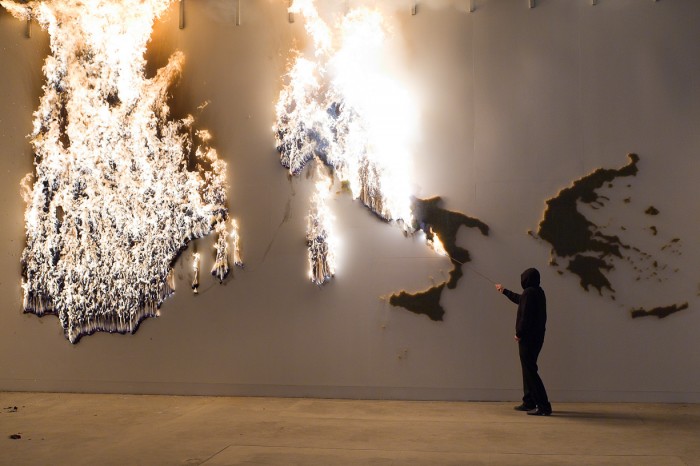
To have any hope of moving forward, she writes, we must acknowledge this situation as quickly as possible. What follows is a question. Fontaine herself has dealt with the ready-made artist’s impotence by making political impotence the means and subject of her work. If the failure of twentieth-century political movements turns them into aesthetic objects, her argument goes, then art possesses a “data bank of potential uprisings.”11
By self-identifying as a “ready-made artist,” Fontaine justifies her continuing participation in the art world while introducing works that, in aspiration, are not wholly cooptable by its logics. This we might call an interpassive strategy: Fontaine lets her “ready-made” alias submit to aesthetic conventions, while she hones her political agenda. The balancing act may be more successful in rhetoric than practice, but for our purposes, it’s worth discussing.
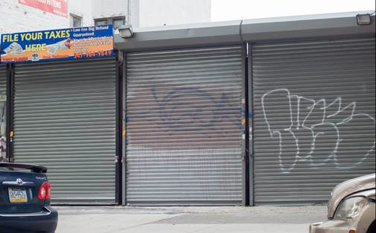
Can we find similar tactics at play on an institutional scale? Consider the Brooklyn shipping container run by artist Raphael Lyon and art historian Lucy Hunter (who happens to be this exhibition’s curator). Established in fall 2013 as a “semi-public, high-security” hub, the container is primarily visible by means of a surveillance camera, which streams live over the web.12
Where is the name of the container and also a question pertinent to it. The site of the “art,” after all, may be the transmission, the vector, the stuttering camera feed. Where imagines a digital screenic public, and we, bloodless and dime-eyed, lean into the role.
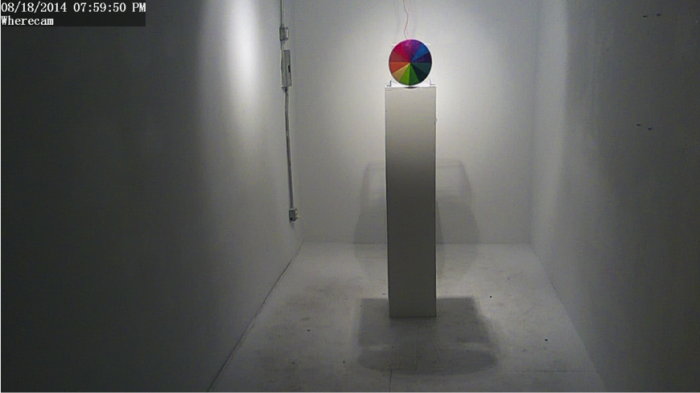
This is beyond the pale of online art viewing. We may prefer seeing our exhibitions in Photoshop finish to taking the flight, the train, or the walk to their galleries, but we draw comfort from the knowledge that they could be seen—and guilt when that window passes.
No, Where’s artworks don’t need your presence; they just need your verification. The viewing contract stipulates that we perform the bare minimum required of an art audience, staring from the comfort of our screens, and that the container provide the bare minimum for a contemporary art space: digital evidence.
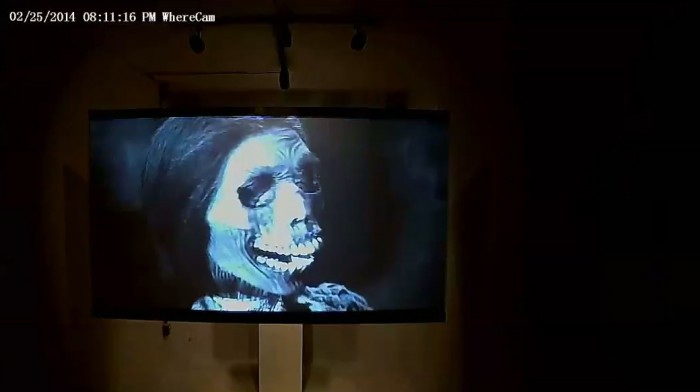
In agreeing to these terms, we gain permission to watch the art on the wires—to marvel as one logistics corridor replaces another: from Performer-Audience-Mirror to Container-Internet-Public. By the time the feed reaches us, most of the work has already been done on our behalf. What we do after that is for us to decide.
Is this a cynical endgame for artcraft, or a sincere go at a new aesthetic relay? Whatever the intent, Where does seem to model an implicitly interpassive agenda. The questions, to my mind, are if and how that agenda could be made explicit…

Last winter, Raphael and Lucy invited me to write a press release. Or, to be precise, I was invited to write a press release for an imagined exhibition; they, in turn, would realize it.
Suffice it to say that the result looked little like what I envisaged—and, in degrees of what-the-fuckness, far surpassed the contents of my release. I wrote a text describing a show of interpassive artworks: a man transformed into a bundle of enema tubing, an autistic child run by remote control. And what resulted was a response to my aforementioned questions, with interpassivity providing the organizing logic.
Here’s what happened:
In April, I finished my release, leaving Raphael and Lucy to decide what would follow.
Several months went by, and at last, this appeared:
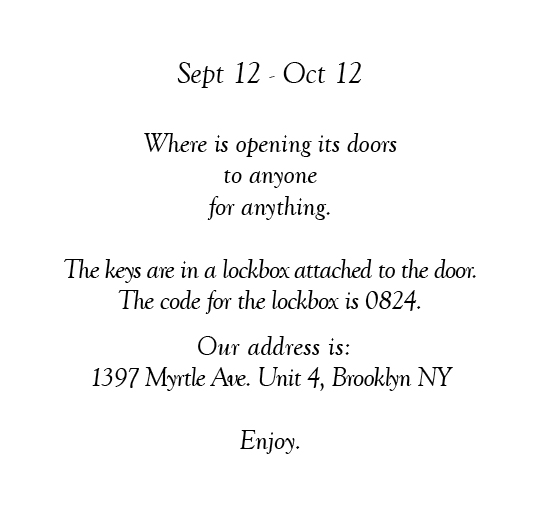
No mention of me, or the release. No ostensible frame, beyond the container.
Then these images started arriving over the surveillance feed:
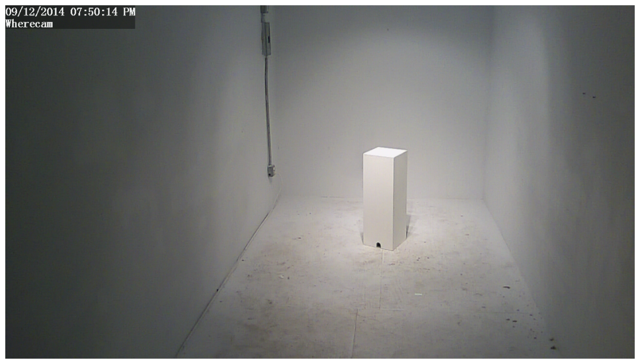

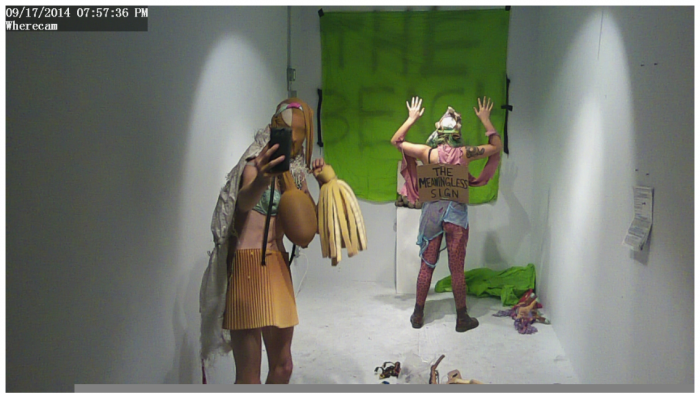

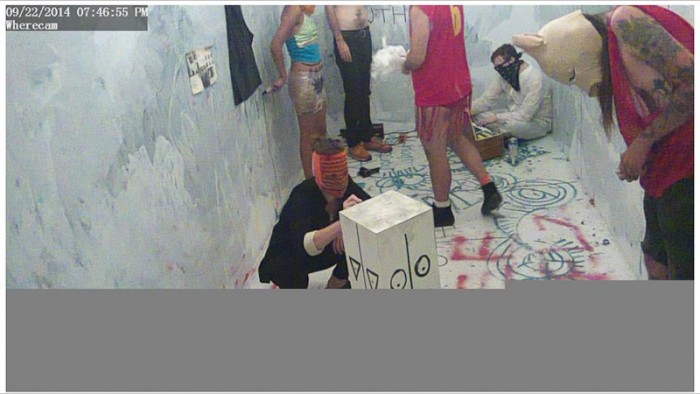
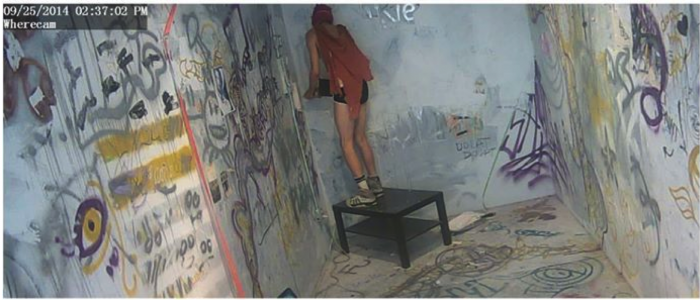
Periodically, mysterious agents would whitewash the walls…
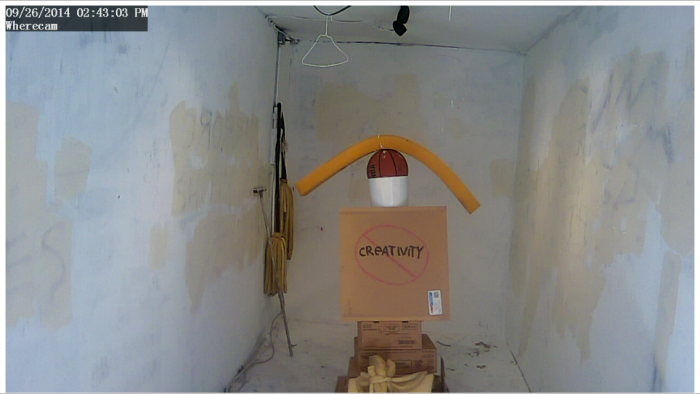
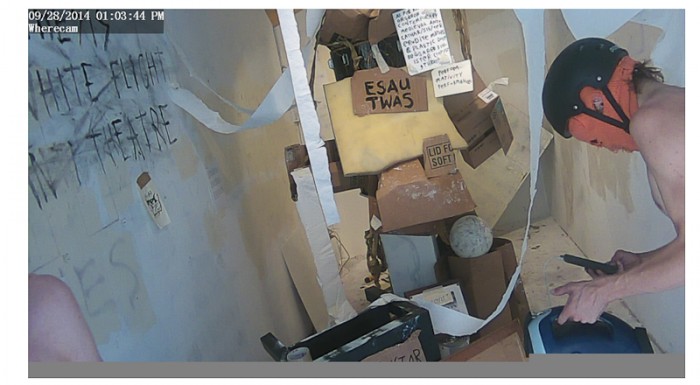
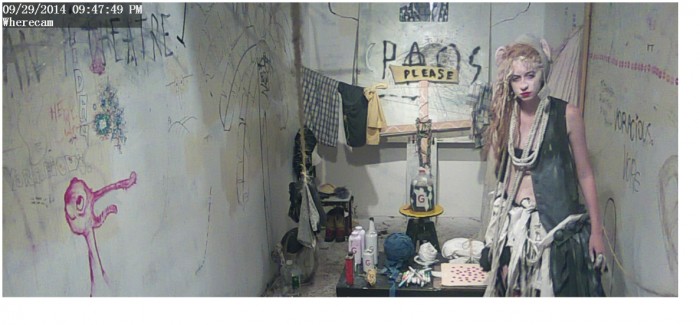
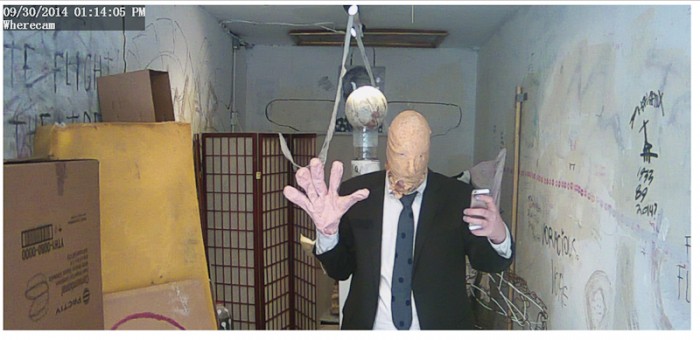
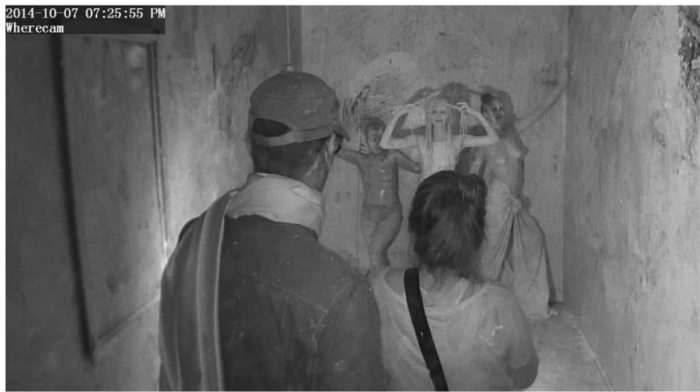
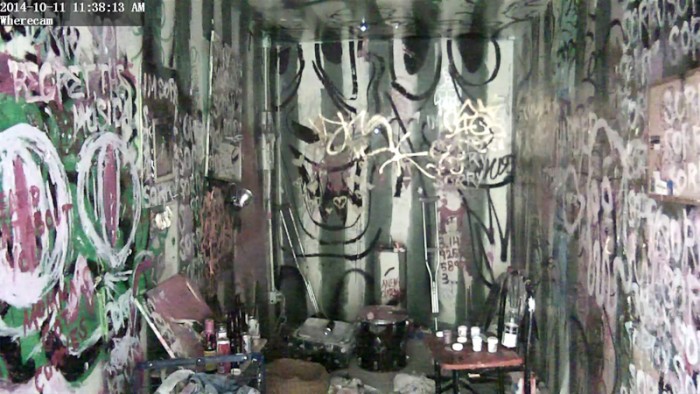
…but there was no stopping the chaos.
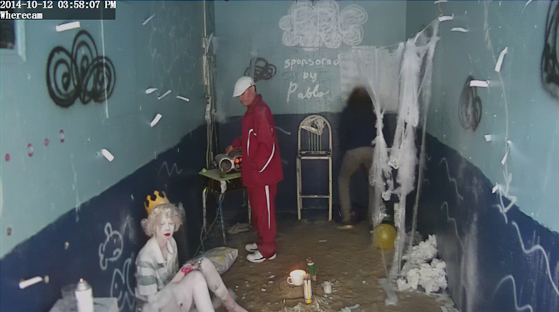
Toward the end of the project, two gangs set up shop, initiated by artist Jon Konkol,13 which ran day and nighttime activities. Poor Lucy, who lived above the space, had to put out fires—literally. The night gang left its candles burning.
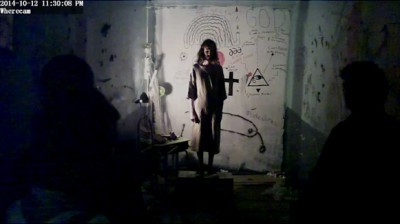
Where’s doors remained open for four weeks, meaning that all of the container madness—that wild, creative din—still conformed, in the end, to the art world calendar. Now several months out, we’re presumably at a point to take stock of what happened, but who among the three of us should do so: the hosts who turned their container over to the whims and wills of the public, or the writer who watched it all unfold from the safety of his laptop? What, for that matter, are the evaluative metrics of an experiment that framed for the unpredictable?
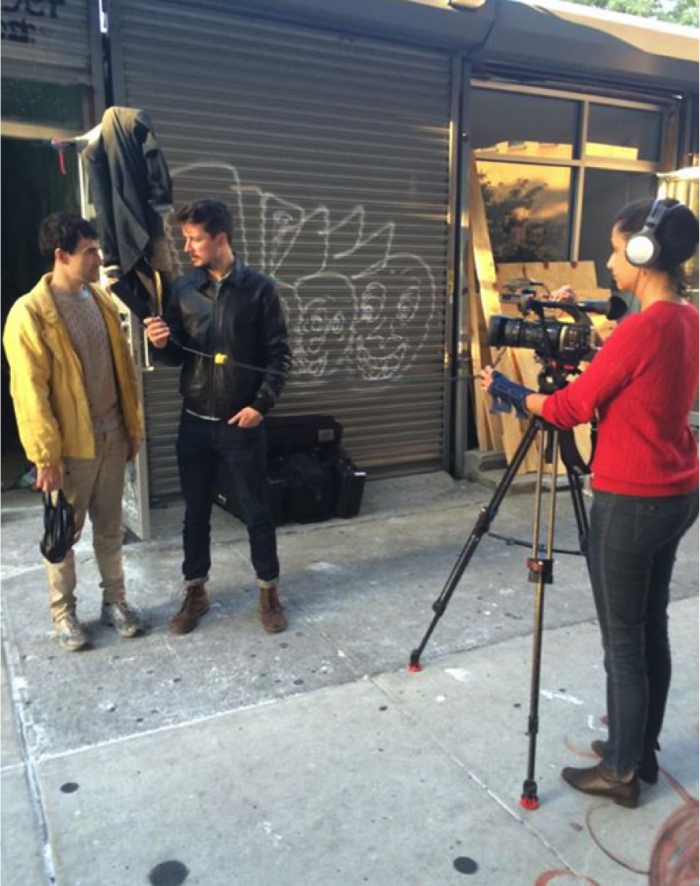
News media can assume this role, though usually just confirm that a thing done was a thing worth doing. In our case, the project received coverage in The New Yorker, The Guardian, and a bunch of snarkier online pubs. It was definitely not what we expected, yet on further reflection, I could see that there was precedent: when the public gets “carte blanche” in an art institution, the media usually takes note.
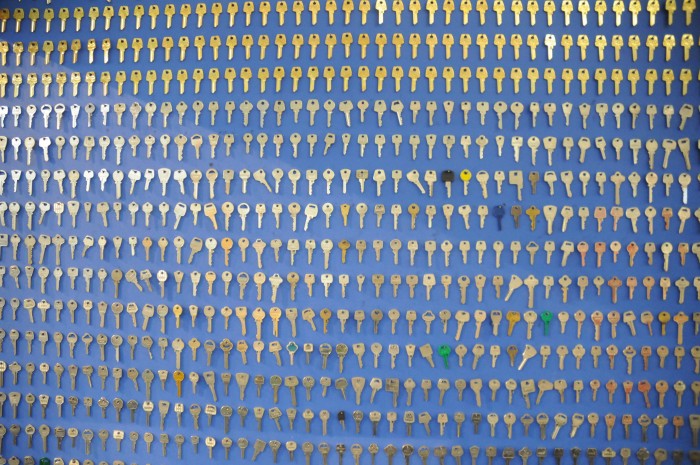
By way of example, a cautionary tale: These are some of the 2,500 keys that artist Paul Ramirez Jonas made for the 28th São Paulo Biennal, which opened the front door of its host institution. The 2008 edition was titled “in living contract” and, as stated in the release, offered “a platform for observation and reflection upon the culture and system of biennials.”14
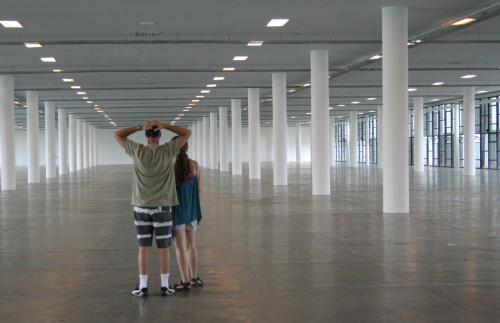
What this meant, in practice, was that the ground floor of the Ciccillo Matarazzo Pavilion became a “square,” its doors opened to facilitate pedestrian flow between the museum and the surrounding park—to diffuse the boundaries of institutional and public space. The third floor housed an exhibition space, library, and conference hall. The second floor remained empty.

To better appreciate these gestures, some context is wanting. First, for its 28th iteration, the Biennal’s budget was slashed from $12 to $3.5 million, and the curatorial team given less than a year to prepare. While emptying a museum can be pitched in the service of public imaginaries, with São Paulo, both politics and economics appeared to be driving the curation.
Second, there were the strictures on public access. A Biennal visitor who exchanged a copy of a personal key for one of Ramirez Jonas’s,15 for instance, was contractually bound to use it only during specified hours outside the exhibition’s opening times, remain on the ground floor, and ideally spend her time meditating on the Oscar Niemeyer Pavilion as a significant piece of Brazilian architecture.16
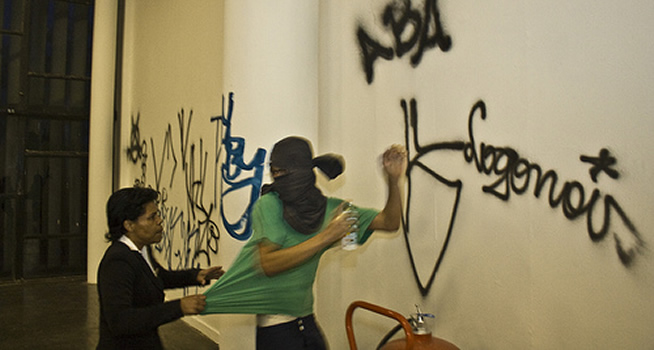
Finally, the curatorial rhetoric was quickly tested, when a group of taggers covered the second floor with pixação painted lettering, vernacular graffiti that the institution treated as vandalism of the country’s cultural heritage. Far from being included in the Bienal’s notional public, the pixadores were dismissed by co-curator Ana Paula Cohen as “those people from the periphery.”17 Thorough security checks were implemented soon thereafter, and the media began to descend…
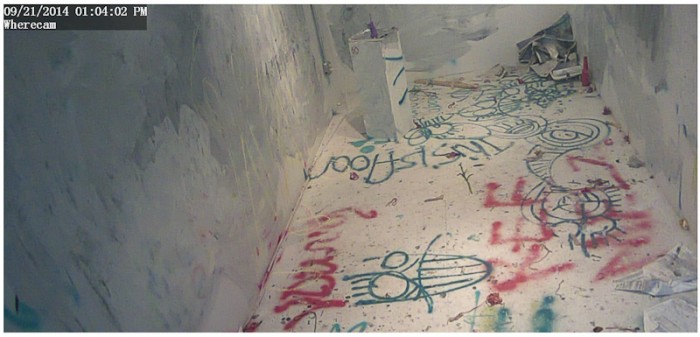
…I’m digressing (again).
Clearly, an international biennial and a Brooklyn shipping container are incomparable entities, when it comes to matters of openness; doubtless, they have varying degrees of tolerance for what a public could introduce to their sites.
Still, we can recognize a crucial difference in how they wear their politics. São Paulo is an extreme case, though as we know, art institutions often endeavor to create socially engaged experiences within their halls. They curate in the name of radicality and sometimes find themselves later compelled to constrict the terms of those experiences.
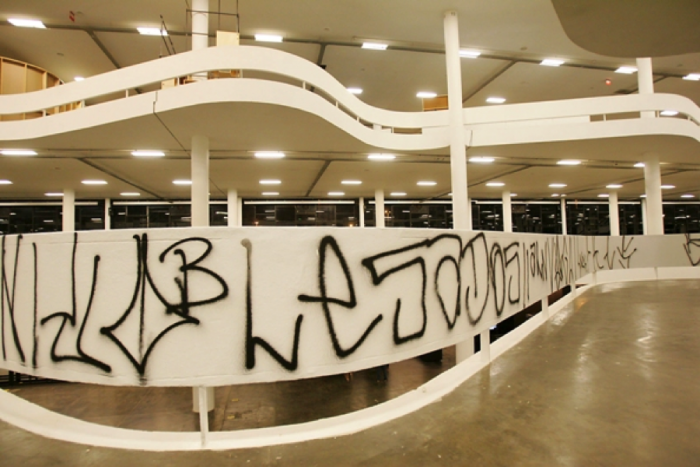
Might this be disingenuous, when it comes to an art audience? The public is being conjured in its ideality, not as the actual people who tiptoe or saunter or rush in. “You can behave in social and interactive and relational ways,” the institution says, “just please behave!”
When an institution opens up in the name of interpassivity, on the other hand, it lets visitors know that far from being free, autonomous individuals, they are actors within a complex art machine. As such, they may be invited onto the institutional stage to perform or imagine their public selves—to prosume an art experience, much as they would on Facebook—but lurking behind that invitation could be a number of forces, from genuine social commitments to basic economic motivations.
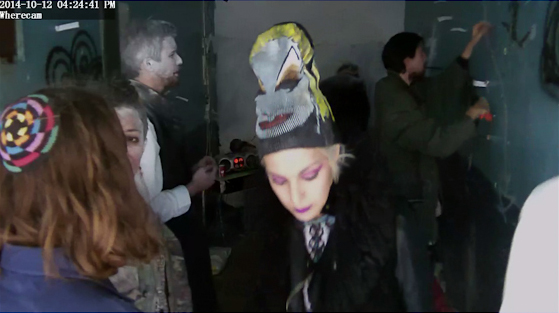
I’m not saying that the sputtering targets and the security container totally breaks the mold, nor provides a model of interpassivity that can readily fit other institutional forms. If this project is evidence of anything, it’s that New York’s art public far exceeds what’s shown in its sanctioned halls, and that this public would benefit from more spaces like the one Where18 briefly created.
If I had a critique, it’s that interpassivity served as the organizing logic, but remained an implicit logic. Participants weren’t made aware of the term, so in a way, the joke’s on them: Raphael and Lucy get a month’s worth of free artistic labor (plus the media hoopla) and all the while, they’re just chillaxing somewhere…
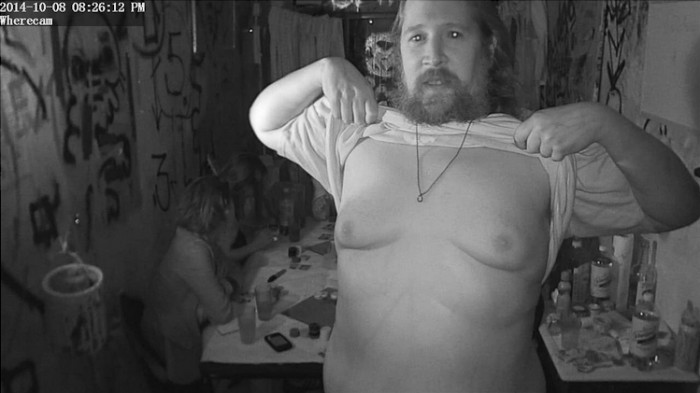
At the same time, the very reason that “interpassivity” was omitted from their initial announcement speaks to the difficulty of embracing the strategy wholesale—of formally inviting the public to engage in its potential exploitation. Yet perhaps we need to abandon the niceties of liberal-democratic rhetoric and take a frank look at how that rhetoric glosses institutional scripts.
How, for example, do our institutions’ stated politics bear out in practice? What are their operative norms? Who is the audience being supposed: are we spectators, publics, engines of aesthetic valorization? When do we come to function as flexible labor by another name, and what do our services enrich?

Interpassivity is an optic for institutions and publics alike, as any meaningful change requires the efforts of both. The goal is not to make institutions feign self-reflection on the media stage, but to identify and critique their operative norms—and, when necessary, refuse to perform to measure.
Within the scope of this essay, the optic is merely a sketch, so please, someone: write that essay. Yet even in notional form, interpassivity strikes me as a means of demanding renewed accountability from our institutions, without forgetting the complexities of the machine called art, nor the many suppositions that we, too, carry through it.
2. For an elaboration of these ideas, see Jodi Dean, Democracy and Other Neoliberal Fantasies: Communicative Capitalism and Left Politics (Durham: Duke University Press, 2009).
3. Slavoj Žižek, “The Interpassive Subject: Lacan Turns a Prayer Wheel,” Lacan.com (August 4, 2009), http://www.lacan.com/essays/?p=143
4. Slavoj Žižek, “The Interpassive Subject,” The European Graduate School, http://www.egs.edu/faculty/slavoj-zizek/articles/the-interpassive-subject/
5. Ibid.
6. Ibid.
7. I’m indebted to the writing of Mark Fisher, which introduced me to Jones’s essay. See Mark Fisher, Capitalism Realism: Is There No Alternative? (Winchester: Zero Books, 2009), 66.
8. Campbell Jones, “The Subject Supposed to Recycle,” Philosophy Today 54, 1 (Spring 2010): 35.
9. Rob Horning, “Me Meme,” The New Inquiry (April 29, 2014), http://thenewinquiry.com/blogs/marginal-utility/me-meme/
10. Claire Fontaine, “Untitled Text,” http://www.clairefontaine.ws/pdf/untitled_text.pdf
11. Ibid.
12.“About,” Where, http://wherecontainer.tumblr.com/post/69816454696/where-is-a-semi-public-high-security-security
13. Image credits: Slides 23-34 and slides 40, 42 and 43 courtesy Where, featuring work by Jon Konkol. Also featuring Kalan Sherrard and Ellen Turrietta.
14. “in living contract,” e-flux (October 1, 2008), http://www.e-flux.com/announcements/in-living-contact/
15. Image credit: Paul Ramírez Jonas, Talisman, 2008, 2500 keys to the Ciccillo Matarazzo Pavilion, exchange booth, contract, Dimensions variable, Installation view, 28th São Paulo Bienal, Courtesy the artist and Koenig & Clinton, New York, Photo Credit: Paul Ramírez Jonas
16. For a thorough discussion, see Royce W. Smith, “28th São Paulo Bienal: In Living Contract,” X-TRA 11, 4 (Summer 2009), http://x-traonline.org/article/28th-São-paulo-bienal-in-living-contact/
17. Vinicius Spricigo, “From artistic internationalism to cultural globalisation: notes towards a critical reflection on the recent changes in the strategies of (re)presentation of the São Paulo Bienal,” Global Art and the Museum (December 2009), http://www.globalartmuseum.de/site/guest_author/254
18For more on the Where project, visit http://wherecontainer.tumblr.com/post/97317684365/where-5-where-5-began-with-a-proposition-that. A full account of the project will also appear in a book, published by Where later this spring.